
What I remember most vividly is how green it was. I was tiny then, close to the green grass, eyes level with the leafy shrubs. Awestruck by the green-dappled blue showing among rustling leaves that seemed as far above me as the sky. The tree trunks were enormous, rough under my little fingers, brown and gray, sometimes greenish. The same colors as the dirt, the rocks, the branches that arched way over my head.
Woods surrounded us, and I ran through them, touching bark, jumping over roots. Shushing through crisp, fallen colors in the fall, on the ground with mushrooms and moss. A daughter of the trees.
We were above trees, too, as the land went down below the sloping garden, full of roses and azaleas. We ran through grass paths to a semicircle of trees with a stone fireplace, never used, but endlessly interesting. Beyond the sloping trees, far in the distance, we could see the silver, glittery Hudson River, whose bridges lit up with sparkles at night. We saw all the way down the river to New York City. The tiny Empire State building rose from a pale blue haze, like a distant tower in a storybook.
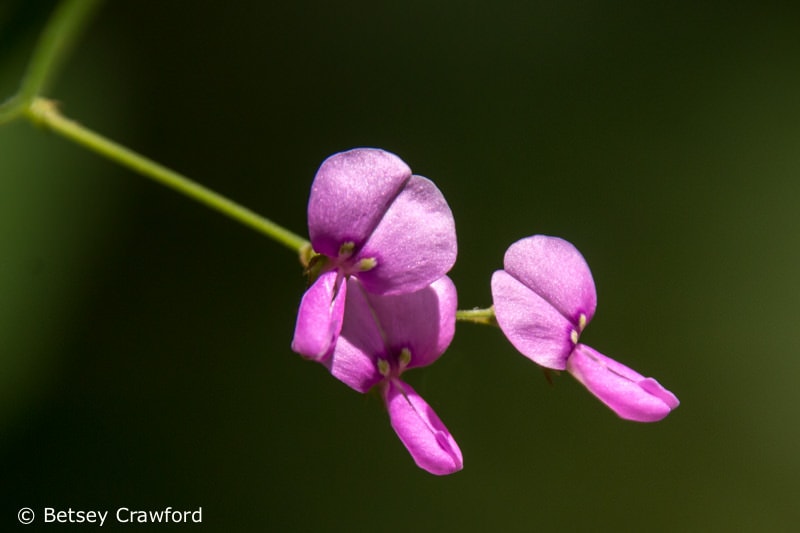
I remember glowing, silky flowers. One cool spring day, I decorated my tricycle with the tulips that grew in a bed of little green leaves, shiny, with blue flowers. My mother told me how beautiful it looked, but suggested that flowers were happier in gardens.
Along the front of the house were bushes with tiny, spiky needles, dark green. They had translucent red berries that squirted if you pressed them. At their feet was dirt, surrounded by stones. In the summer, we would add water from the hose and play in the cool mud.
The house backed onto a hill with a rock ledge we could climb up. A little brown building stood among the trees. We weren’t supposed to go near it, which convinced me an ogre lived there. The upper hill continued down the driveway, which was so long that you couldn’t see the end. There were trees going up on one side, sloping away on the other, a vast tunnel of green.
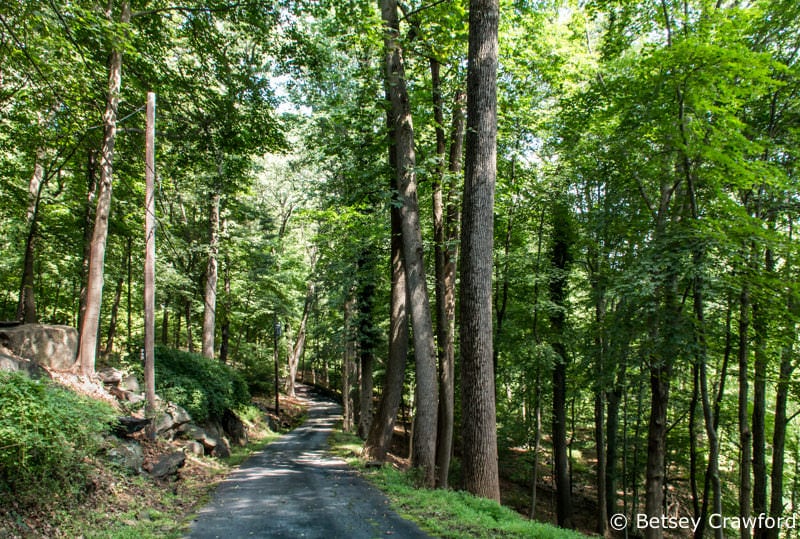
On the opposite side from the driveway was a brown path through the woods. It took us over a falling-down stone wall to an enormous, gray rock the size of a hill. Huge cracks made openings and ledges that turned the rock into houses and forts.
‘We’ were my brother Perry and I until one day a voice commanded us to “get off our rock.” We searched for the voice, mystified. It turned out to be a girl even smaller than I was. “It’s our rock,” we said.
We settled it amicably because she and her brother and the two of us became inseparable. That brought me to other lands. A meadow of tall, rustling grasses that filled the air with warm, spicy sweetness when mowed. A small, rickety, screened summer house where we found two rusted beds. We would lie on the flat metal springs, even though sharp pieces poked into us.
They had wonderfully mucky water along their driveway. It had a name, Kaplan’s Pond, as mysterious as anything else about it. We would occasionally try fishing, and I once caught a sunny. But I preferred following dragonflies and butterflies along the muddy edge.
An old man and woman lived near the pond, in a tiny house in the woods, like people in a fairy tale. They were artists and we would paint with them every once in a while.
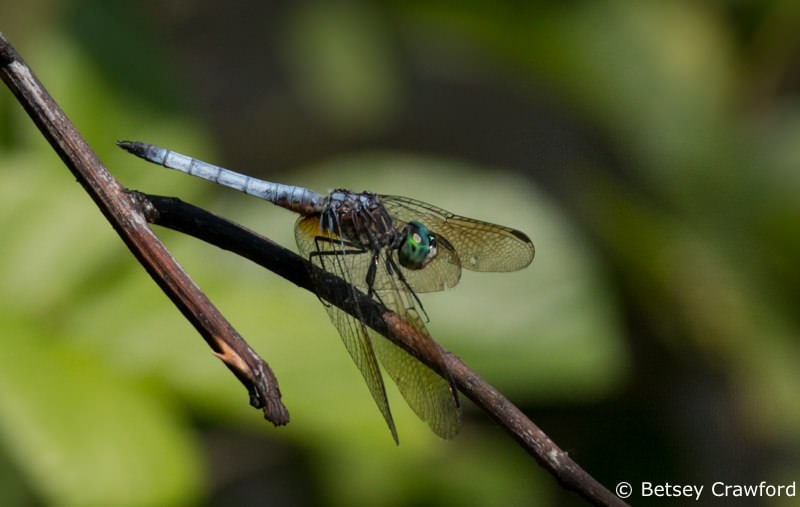
My sister, Susan, was a newborn when we first moved there. But by the time she was three, she was part of our adventures. One day she and I found a beetle on a tree. It was well above our heads, and enormous, the length of my hand, shiny black with orange pincers as long as its body. We were transfixed, and couldn’t tear ourselves away, waiting for our father to come home and rescue us.
The beetle barely stirred all afternoon, but any movement had us running inside to report to my mother. When my dad arrived, we dragged him to the tree. He got a ladder and a jar and captured it briefly so we could see it up close. The pincers fascinated me, but the beetle in the jar couldn’t compare to the delicious terror of the beetle on the tree.
It was paradise. I lived there for five years, from the ages of two to seven. Despite everything that has happened in the sixty-odd years since, that vivid sprite, trailing leaves and flowers and dirt, is still with me.
Things were happening even then. For all the vibrant, green heaven surrounding us, inside the house my mother was sinking deeper and deeper into depression. I was beginning the sad, fruitless task of trying to be a good enough girl to bring back the happy mother I’d known.
I remember not wanting to move, but I don’t remember being unhappy when we did. I was too young to know that not every place was full of deep magic. My sister Connie was already two. My mother, with four young children in a tiny house tucked away in the woods, was very glad to be moving.
At that point, her happiness mattered the most to me. Our new home was much roomier, but on a hill so steep there was no yard to play in. It was a quiet street in an old suburban neighborhood, with lots of big trees.
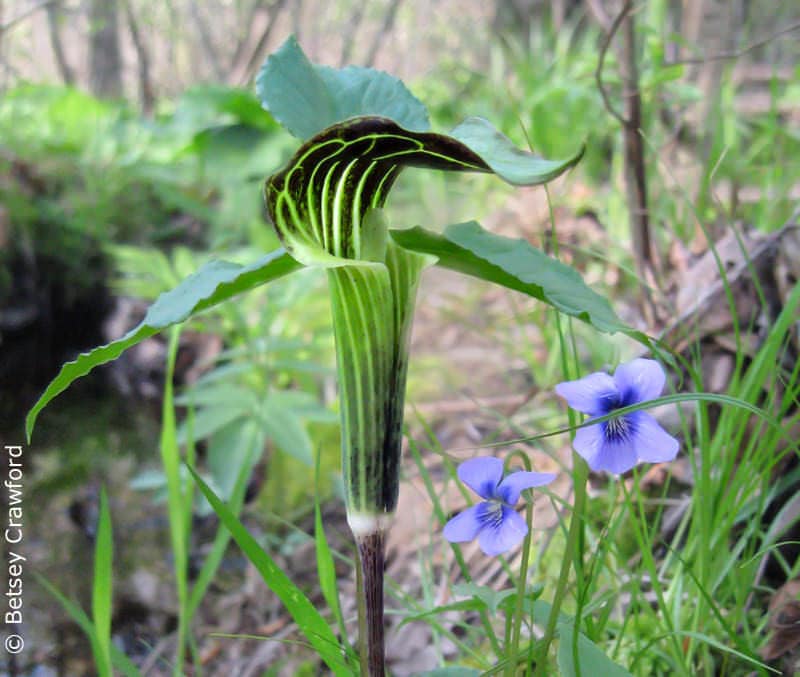
There was a still-vacant lot nearby with a sliver of woods where we found wild grapes in the fall. My father cut us a curving, fragrant tunnel through the wild tangle of honeysuckle between our house and our neighbor’s. One spring a jack-in-the-pulpit showed up mysteriously among the trees separating us from the house in back.
Violets grew in profusion where tree roots had heaved up the sidewalk. One neighbor had a hedge of mountain laurel which bloomed in cascades of tiny white and pink cups every June. Another had one of lilacs that smelled heavenly in May.
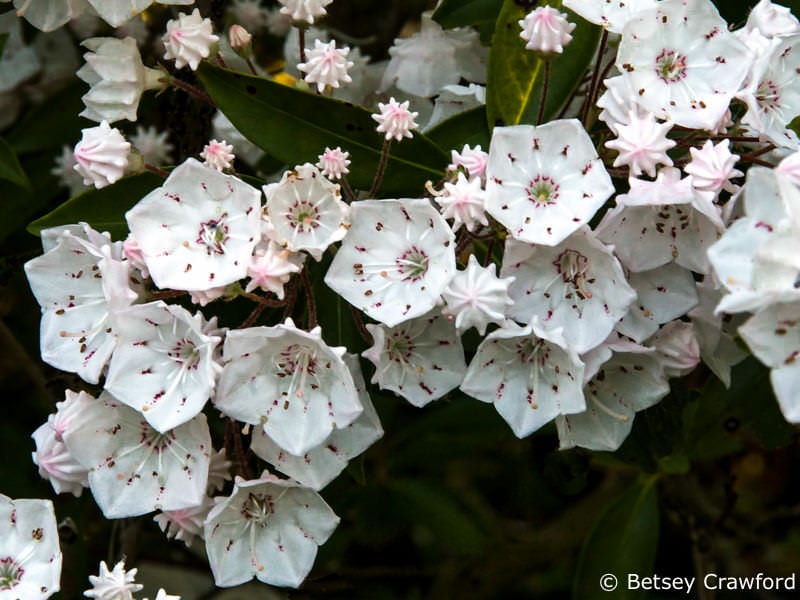
Perhaps I would have learned to love the natural world just as much in that neighborhood. I have my doubts. I feel sure the deep, mystical connection I have with nature was born in the Eden I lived in earlier.
I went back to see it one summer, on a trip to New York. I’d visited many years before when the house was still the same one we lived in. I marveled then at how small everything was compared to the expansiveness of my memories.
Now, the only vista that remains the same is the driveway. The big rock has a house on it. Kaplan’s Pond has been cleaned up and gentrified, though its edges are still full of dragonflies. Trees getting ever taller block the view of the river. It’s still a wonderful place, and the present owner warmly welcomed me, but it’s not my paradise.
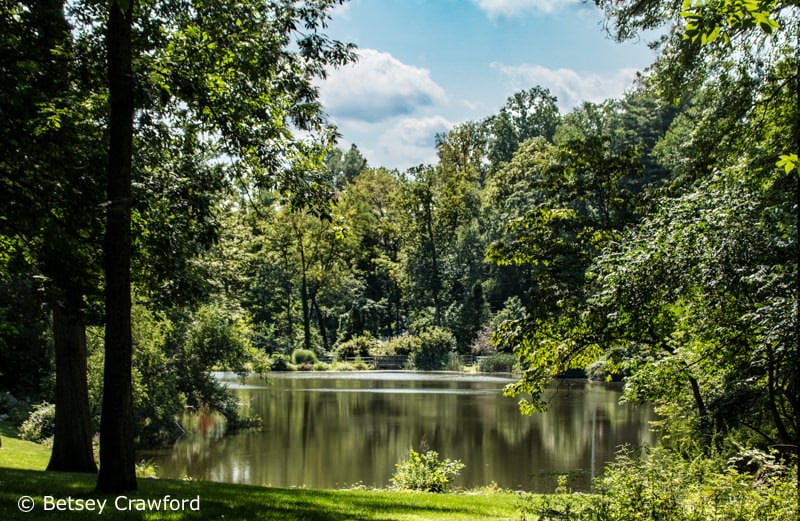
It doesn’t need to be, since I have been carrying that paradise inside me for all these years. In that, I have been blessed. Today, even children in rural communities don’t have the experiences that were so important to me. There are many reasons for this, starting with the fact that tightly scheduled children don’t have the leisure we enjoyed. They are more likely to spend the free time they have indoors, especially on the computer.
The belief in open, unstructured play has diminished, as have the places hospitable to it. Parents are fearful of risk — from insects, strangers, falls, drowning — and angry when risks prove dangerous. According to Richard Louv, the author of The Last Child in the Woods, the fear of lawsuits if a child gets hurt is haunting everyone from private homeowners to the Boy and Girl Scouts to the national parks.
Lack of access to nature is a worldwide issue. And worsening despite a growing body of information about the necessity of outdoor play in green settings for mental and physical health. The more stress in a child’s life, the more crucial this has proven to be. Louv details studies showing that children with ADHD, in particular, thrive when learning in natural environments.
It makes perfect sense. We evolved with plants and trees, not concrete. Our ability to sense, to learn, to make connections, to pay attention was, not long ago, done within the framework of the natural world. The turning of the earth and the cycles of the moon set our calendar. The sun was our clock.
Children are not meant to be still and quiet for hours. Evolution didn’t prepare us to sit at desks all day, or to stare at a screen, to be indoors. Or to work in cubicles, or play only in designated, asphalt-covered, chain-link-surrounded playgrounds.
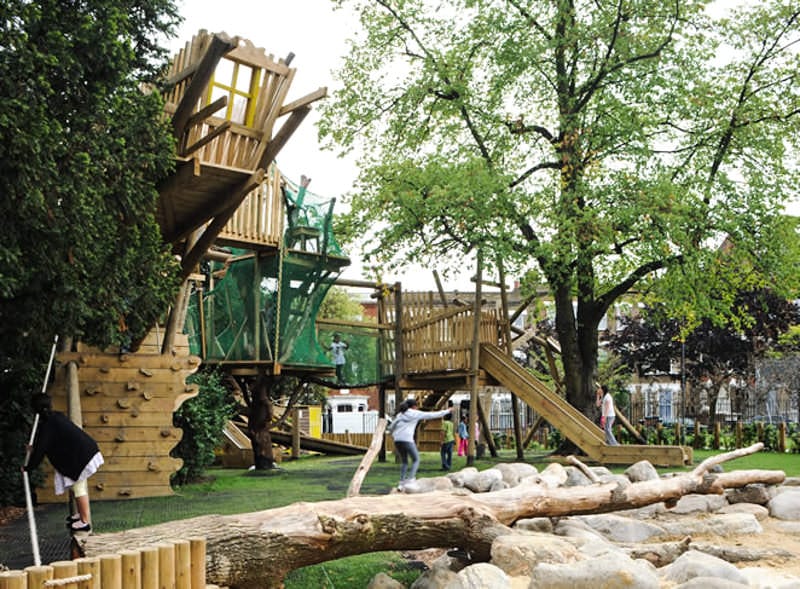
Amidst a growing reverence for information at the expense of sensory experience, a world increasingly urban often leaves children and nature behind. Planning — what there is of it — emphasizes traffic patterns, safety, housing density, commuter issues. With 80% of the U.S. population living in urban areas, playgrounds are often a child’s only contact with nature.
Their design has been slow to evolve. The enchanting adventure playground above, designed by Erect Architecture in London, built among the trees of an old arboretum, is still rare in its embrace of the way children play.
From a street near me in Marin, the fountains and cascading pools in the photo below look like the ornamental feature fountains usually are. But these are right next to another well-designed playground. You can see from the little footprints everywhere that children flock to the rocks and pools.
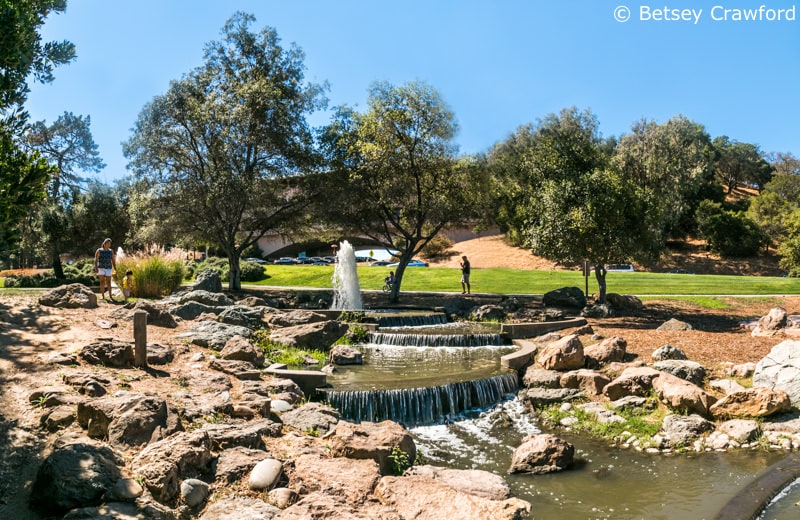
But even the best playgrounds are no substitute for the preservation and protection of natural areas in urban and suburban settings. Louv named the loss of this essential connection ‘nature deficit disorder.’
Studies show it leads to higher crime, increased depression, more learning disabilities. The presence of nature in children’s lives and activities boosts many things we say we value: test scores, cooperation, self-esteem, thinking, happiness.
Crucially, children who cherish birds and flowers grow up wanting more of them. Where, he asks, will the future environmentalists come from? “If children do not attach to the land, they will not reap the psychological and spiritual benefits they can glean from nature, nor will they feel a long-term commitment to the environment, to the place.”
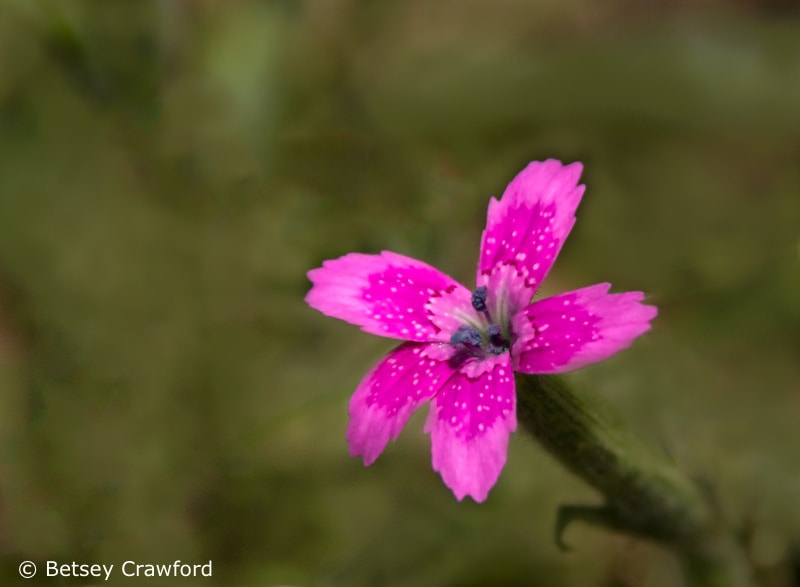
Thinking about my own early life among the trees, I thought at first I would call this essay ‘Paradise lost’. Though I was blessed to spend many years living in another magical place, I have carried a thread of poignant loss ever since I left that deep green world.
But I also feel profoundly grateful for those years in the Garden of Eden. They prepared me to create other Edens as a landscape designer, and to re-find that joy in so many ways and places all my life. As I get older, and the roles and tasks of the intervening decades fall away, the call of that wild green girl gets more and more vivid.
She lives, I now realize, at the core of my being. Through her, I am rooted in the natural world I love so much. With her I lie on the ground with luminous flowers, or sit on pine needles that smell of the ever-rising sap of trees. With her, I walk on rocks that form the bedrock of my life on the earth that created me.
This is my oldest and deepest essence, a gift given to me by Nature herself. Just for being there, open and ready, willing to share my delight, my curiosity, my joy, as well as my confusion and grief. I lived in a landscape as alive to me as I was. That enduring faith has been the greatest gift of all.

~ RELATED POSTS ~

In 2016 I spent the summer in the prairies, the last a restoration in Wisconsin. I took my brother, Perry, who was losing the use of his body and mind due to a degenerative neurological disease.

Living on an ancient and vital landscape had a profound effect on me. It was my call of the wild. When I opened my door I knew I was emerging into a landscape that was as alive as I was,

One of the earliest — and among the most personal — of my essays, about the uncanny ways the desert brings us to herself to reveal ourselves.
Yes, you captured the feeling of being a child in Nature, Betsey. Thank you. I felt a strong pang of jealousy at the sight of the long driveway under the trees and wish I had lived in such a place as a child. But I did hike in such places every summer in Switzerland in France with my husband, who was Swiss, and I keep them in me just as you keep your childhood places. It feels gratifying to me to read your descriptions and know that there’s a kindred soul nearby.
Rhapsodic. Transporting. Our long, narrow back yard in Columbus, Ohio, where I grew up. A random stone walkway overarched by the “grape arbor,” whose grapes were, for some reason I never knew, called “horse grapes,” and designated as not to be eaten. (I didn’t even know then what an “arbor” actually was.) An aging apple tree I used to climb, until the tree succumbed to its own weariness, and its branches began to crack and fall. Even then, its fruits fed bugs and worms, and bits were cut annually from all of them and Mom made her yearly batches of always-a-little-too-sour-for-me applesauce.
This piece has real power – the power of knowing, and of profound remembering. Two mornings ago, I woke up just before dawn in a very nice room, in a very nice hotel near the airport in Geneva. I looked out the window just as the sky was beginning to grow light. All I could think of was that the earth was turning, and it didn’t matter one whit where I thought I “was”… That turning was all that was really happening. I read this, and remembered again. Beautiful.
MLAA…
Thank you for this lovely meditation. I love how magical everything was when we were children, and how magical it remains, no matter how practical we feel we have to get in our adult lives.
Beautiful evocation of a beautiful time in our lives! And of how you internalized what that time and place meant to you, has stayed with you, and informed the landscapes you designed. I remember how you made a “wooded glen” of your tiny backyard on West 11th St., complete with curved path. I told a friend, “if it were me, I’d have made a tiny Versailles.” He said he would have done the same. Happy to say such impulses to “sculpt” nature have long since disappeared, inspired by your work!
Thank you for this lovely reply, Sue. I was thinking of that ‘wooded glen’ when I was writing the essay, and how the first thing I did when gardening was to recreate the woods I loved so much.
I love that wild green girl and the glorious woman she’s become! Thank you for your dedication to her and nature.
????????????
Thank you, Annie. What a lovely response.